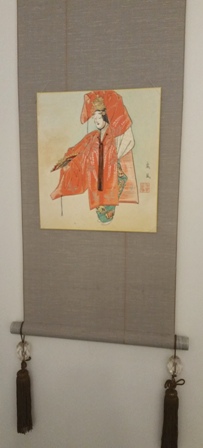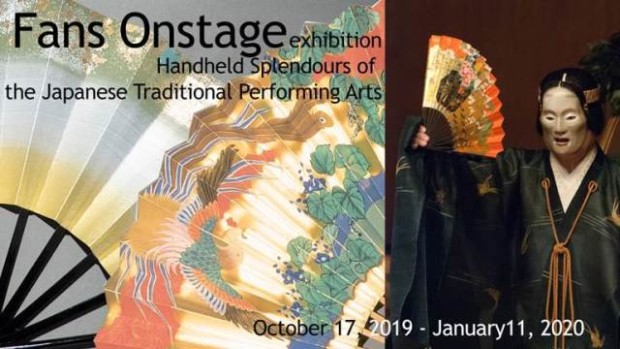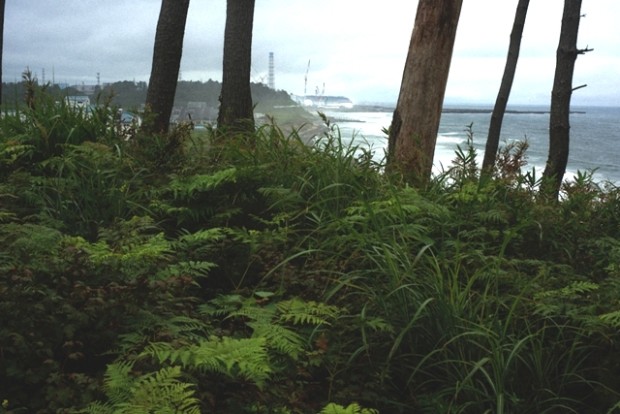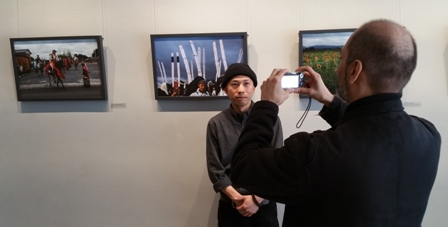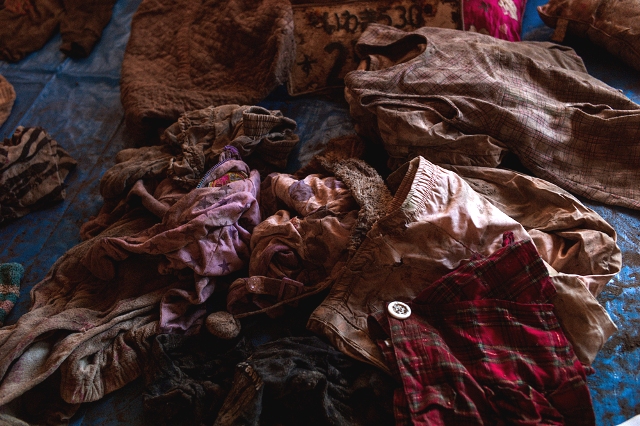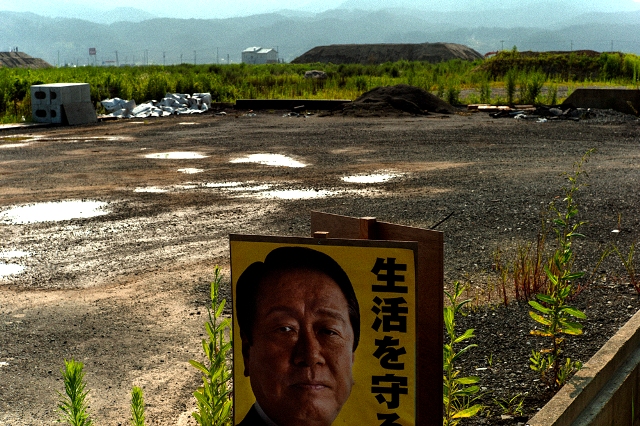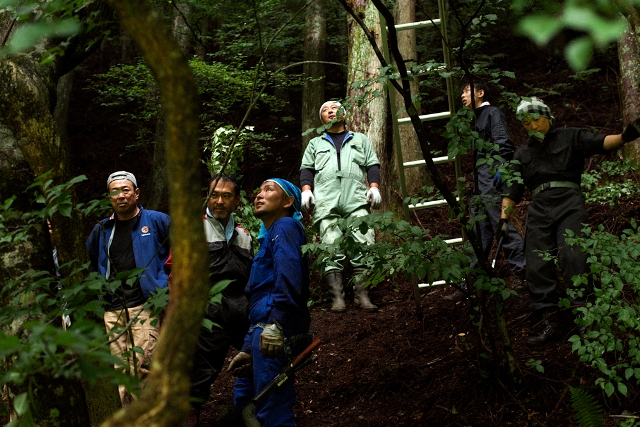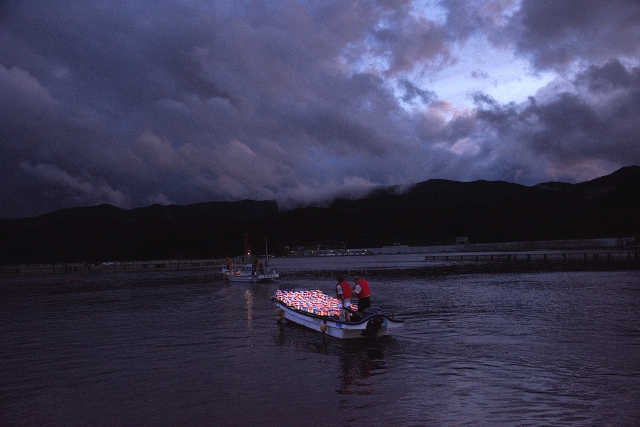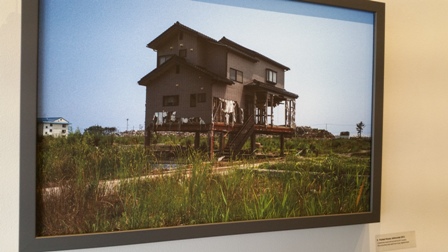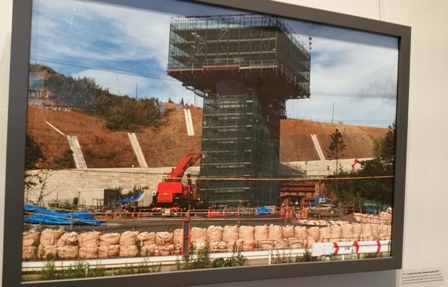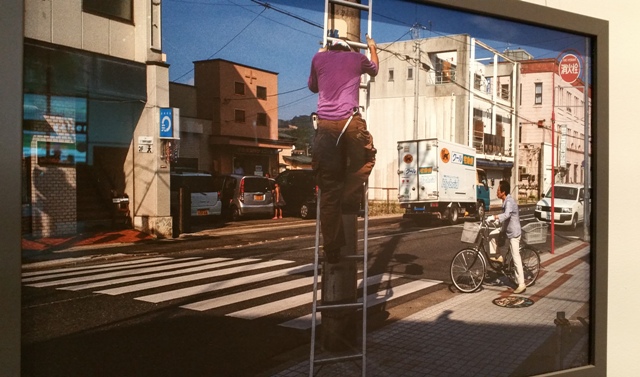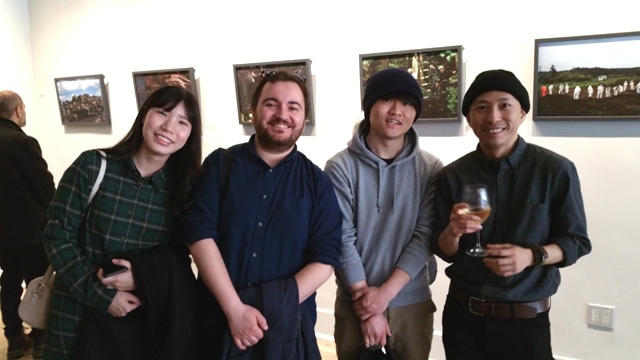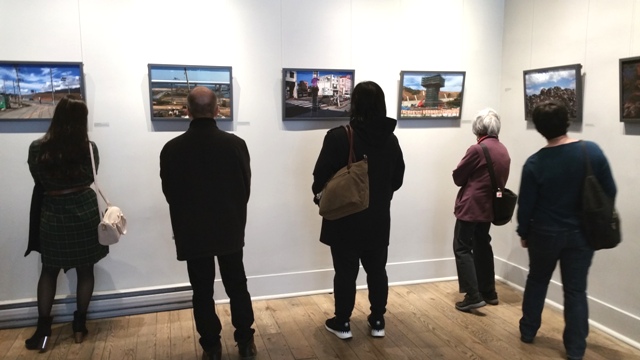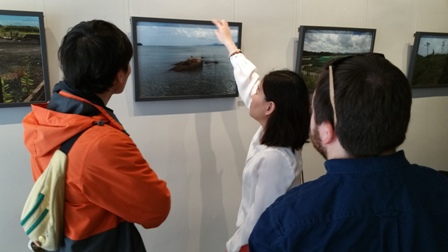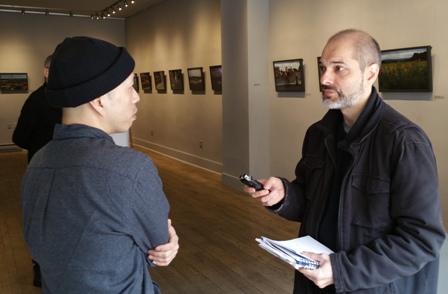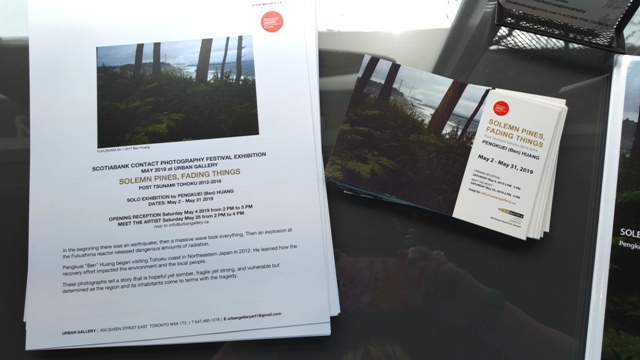As many of you know, I’m a huge fan lover and am never caught without my own beautifully designed fan to keep cool. My prized fan possession is one that Canada’s Grammy-nominated flutist, Ron Korb, brought back for me from Hiroshima where he performed at a memorial concert. It was so beautiful, covered with tiny origami cranes, that I had it framed (below).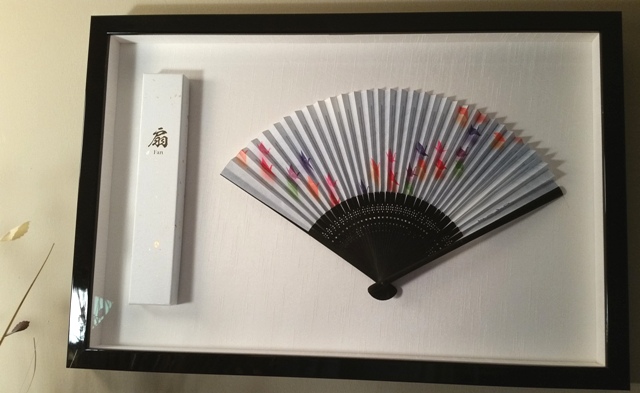 I couldn’t believe that I forgot to attend the spectacular exhibition of theatrical fans from Japan’s Noh and Kabuki theatre worlds at Toronto’s Japan Foundation located at 1 Bloor East (Royal Bank bldg) but after a reminder email, I dashed in today for a visit and boy, am I happy I did. Fans Onstage closes tomorrow Saturday Jan 11 so hurry hurry hurry! Admission to the Foundation’s gallery is FREE.
I couldn’t believe that I forgot to attend the spectacular exhibition of theatrical fans from Japan’s Noh and Kabuki theatre worlds at Toronto’s Japan Foundation located at 1 Bloor East (Royal Bank bldg) but after a reminder email, I dashed in today for a visit and boy, am I happy I did. Fans Onstage closes tomorrow Saturday Jan 11 so hurry hurry hurry! Admission to the Foundation’s gallery is FREE.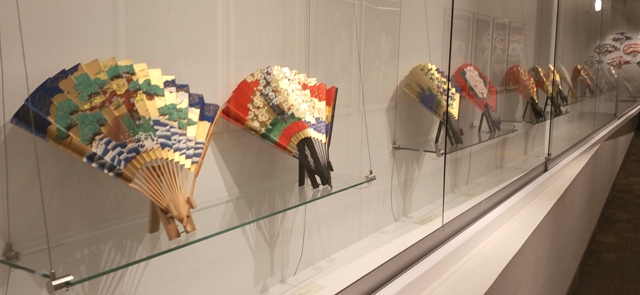
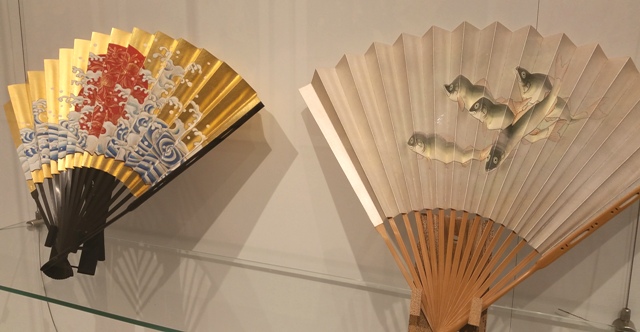
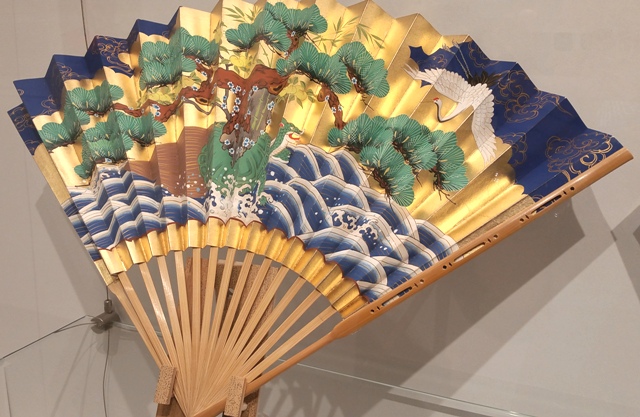 To quote the information found on their website: Japan’s association with fans can be traced back to the Nara period (8th century) with the cypress fans made of wooden hinged strips, followed by the invention of paper folded fans in the Heian period (9th century). As early as the late 10th century the paper folded fans, which differed from flat unfoldable fans, were exported from Japan to the Korean peninsula and China as luxury imports. In the West, in ancient Egypt and Greece, there were records of folded fans, but the tradition of using fans died out during the Middle Ages. Whereas in the East the new technique of making fans – the application of paper on both sides of the fan ribs – was brought from China to Japan at the beginning of the Muromachi period (early 14th century). This new method of manufacture revolutionized the production and export of fans. Through Portuguese and Dutch traders folding fans were spread out from Japan to the global market and other cultures.
To quote the information found on their website: Japan’s association with fans can be traced back to the Nara period (8th century) with the cypress fans made of wooden hinged strips, followed by the invention of paper folded fans in the Heian period (9th century). As early as the late 10th century the paper folded fans, which differed from flat unfoldable fans, were exported from Japan to the Korean peninsula and China as luxury imports. In the West, in ancient Egypt and Greece, there were records of folded fans, but the tradition of using fans died out during the Middle Ages. Whereas in the East the new technique of making fans – the application of paper on both sides of the fan ribs – was brought from China to Japan at the beginning of the Muromachi period (early 14th century). This new method of manufacture revolutionized the production and export of fans. Through Portuguese and Dutch traders folding fans were spread out from Japan to the global market and other cultures.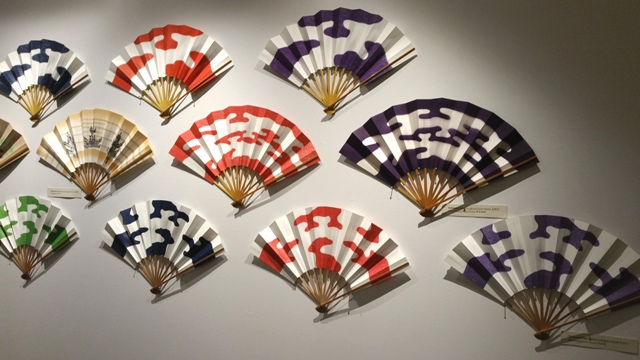
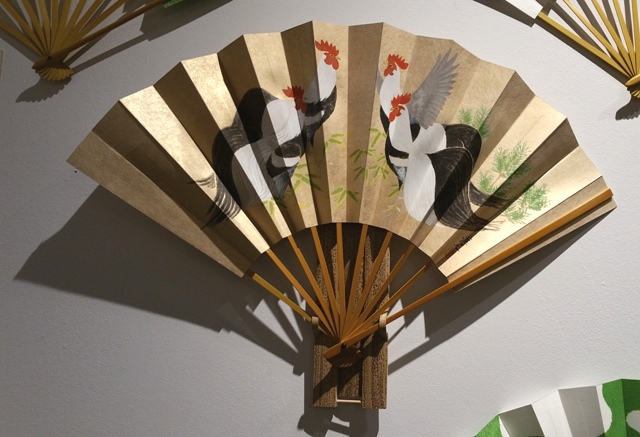
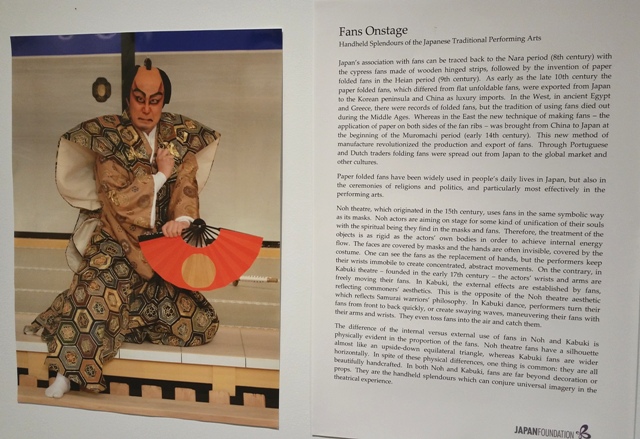 Paper folded fans have been widely used in people’s daily lives in Japan, but also in the ceremonies of religions and politics, and particularly most effectively in the performing arts.
Paper folded fans have been widely used in people’s daily lives in Japan, but also in the ceremonies of religions and politics, and particularly most effectively in the performing arts.
Noh theatre, which originated in the 15th century, uses fans in the same symbolic way as its masks. Noh actors are aiming on stage for some kind of unification of their souls with the spiritual being they find in the masks and fans. Therefore, the treatment of the objects is as rigid as the actors’ own bodies in order to achieve internal energy flow. The faces are covered by masks and the hands are often invisible, covered by the costume. One can see the fans as the replacement of hands, but the performers keep their wrists immobile to create concentrated, abstract movements. On the contrary, in Kabuki theatre – founded in the early 17th century – the actors’ wrists and arms are freely moving their fans. In Kabuki, the external effects are established by fans, reflecting commoners’ aesthetics. This is the opposite of the Noh theatre aesthetic which reflects Samurai warriors’ philosophy. In Kabuki dance, performers turn their fans from front to back quickly, or create swaying waves, maneuvering their fans with their arms and wrists. They even toss fans into the air and catch them.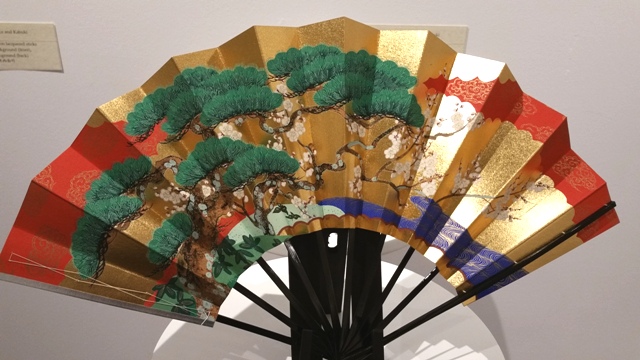
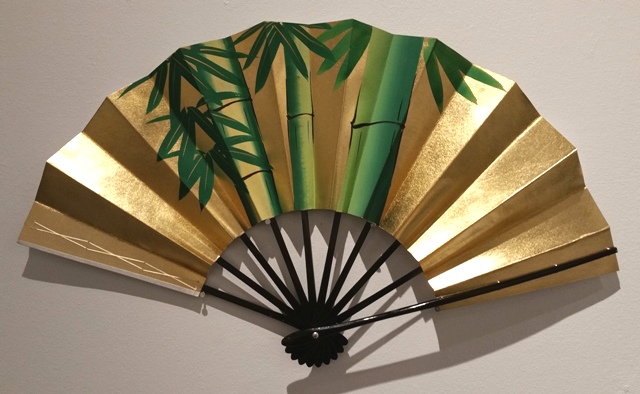
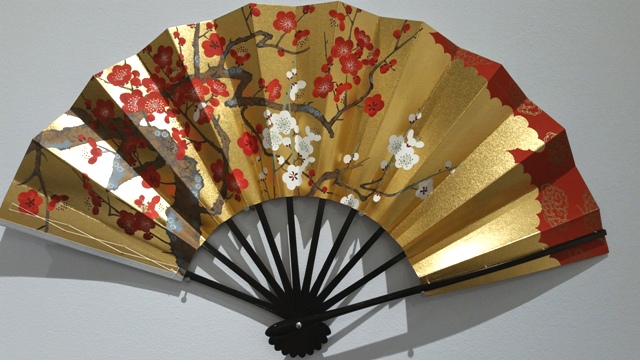 The difference of the internal versus external use of fans in Noh and Kabuki is physically evident in the proportion of the fans. Noh theatre fans have a silhouette almost like an upside-down equilateral triangle, whereas Kabuki fans are wider horizontally. In spite of these physical differences, one thing is common: they are all beautifully handcrafted. In both Noh and Kabuki, fans are far beyond decoration or props. They are the handheld splendours which can conjure universal imagery in the theatrical experience.
The difference of the internal versus external use of fans in Noh and Kabuki is physically evident in the proportion of the fans. Noh theatre fans have a silhouette almost like an upside-down equilateral triangle, whereas Kabuki fans are wider horizontally. In spite of these physical differences, one thing is common: they are all beautifully handcrafted. In both Noh and Kabuki, fans are far beyond decoration or props. They are the handheld splendours which can conjure universal imagery in the theatrical experience.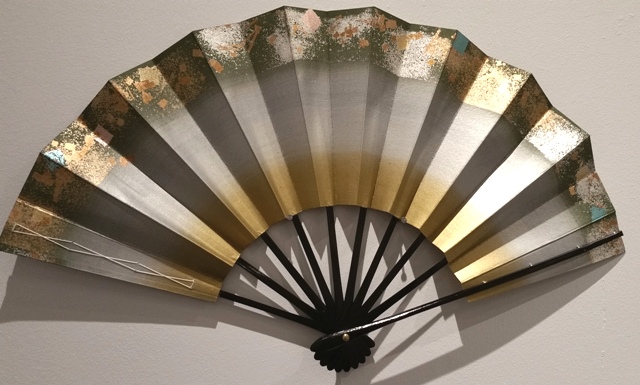
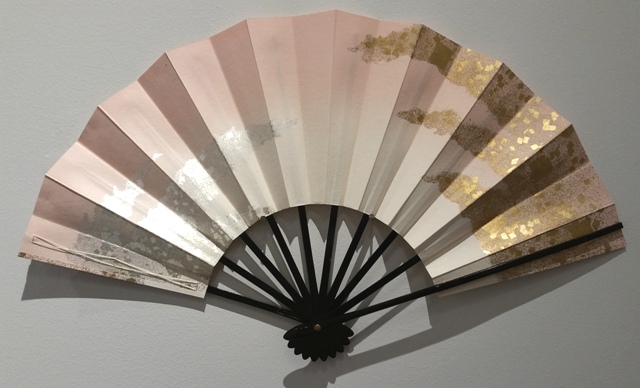 For directions and times, visit the Japan Foundation’s website: www.jftor.org and remember – only 1 day left to see these magnificent works of art.
For directions and times, visit the Japan Foundation’s website: www.jftor.org and remember – only 1 day left to see these magnificent works of art.